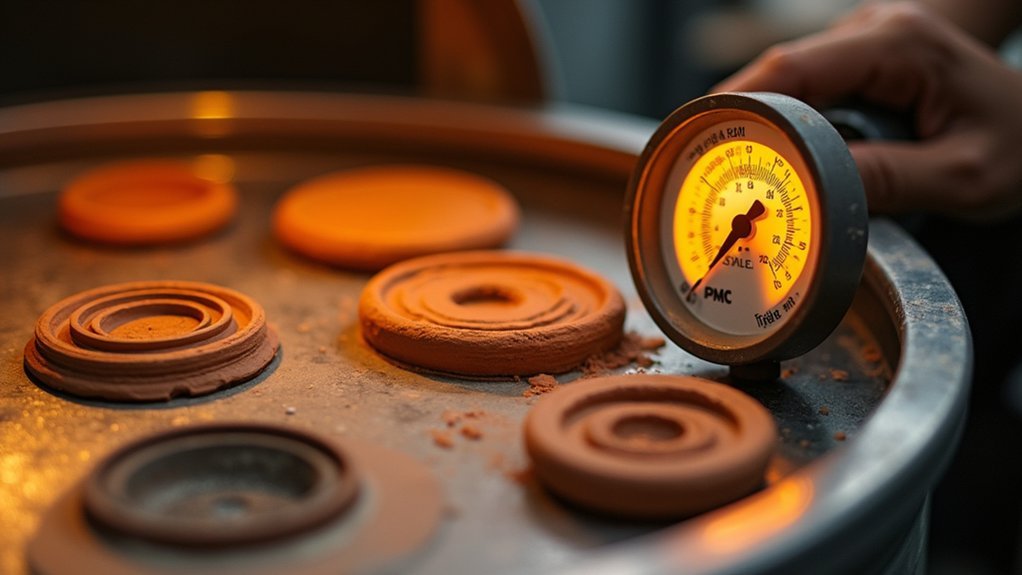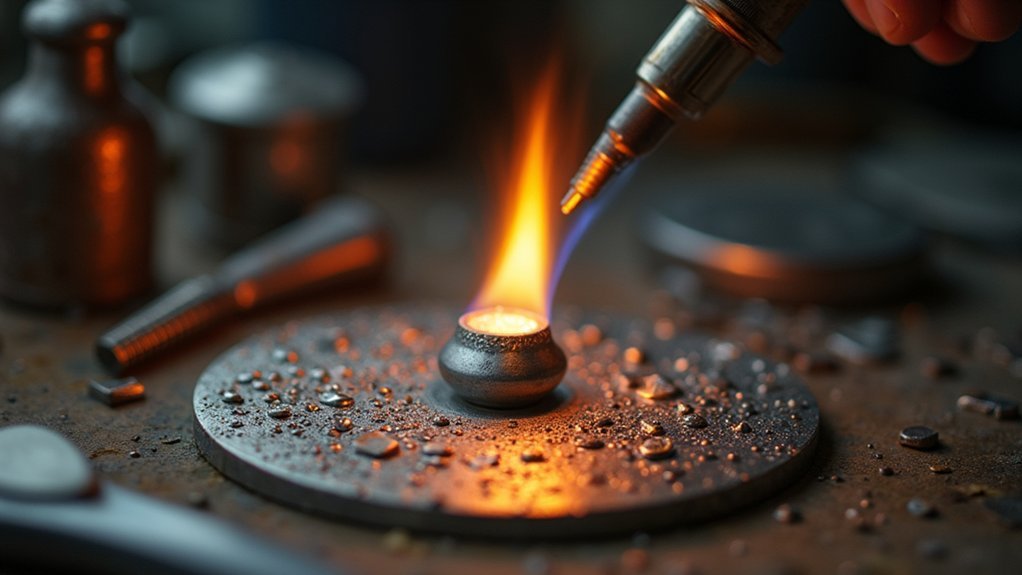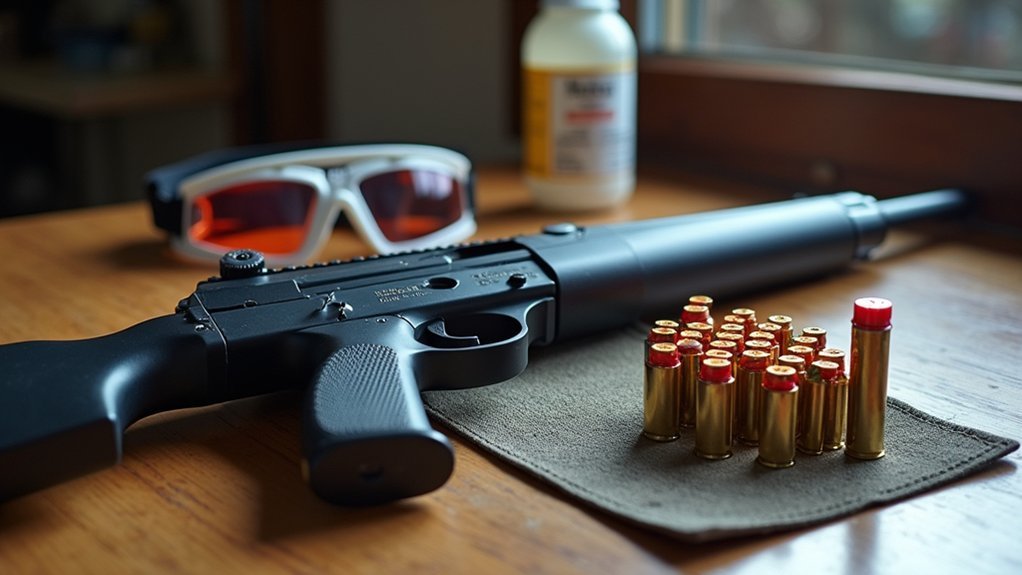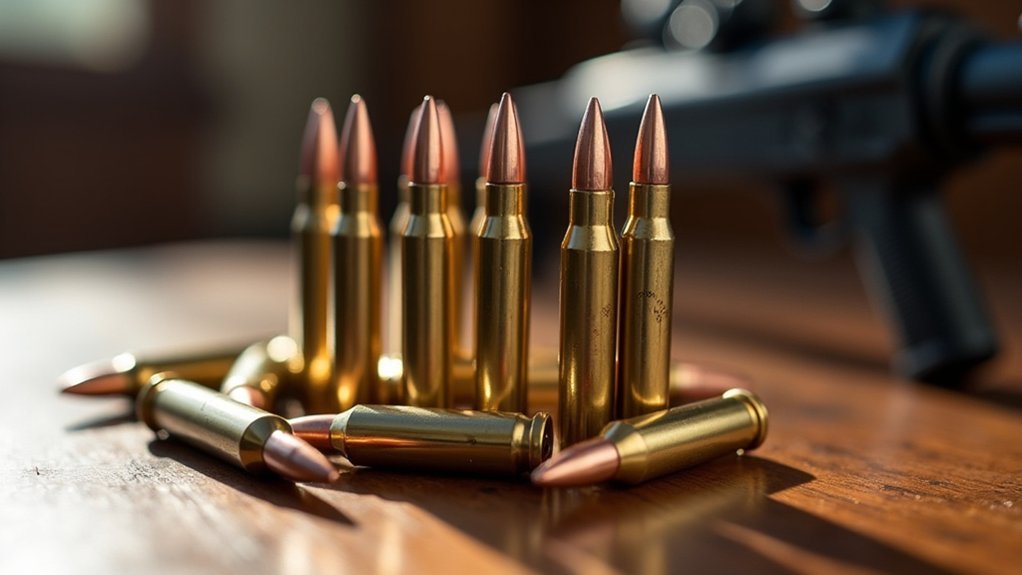You’ve spent hours crafting your first Precious Metal Clay piece, but now comes the moment that’ll make or break your creation—literally. Firing PMC isn’t as simple as cranking up the heat and hoping for the best. The temperature you choose, the method you select, and even the timing can transform your carefully shaped clay into either a stunning piece of silver jewelry or an expensive pile of metal crumbs. What you don’t know could cost you.
Understanding Temperature Requirements for Different Clay Types

When working with precious metal clay, you’ll discover that each type demands specific temperature and time combinations to achieve proper sintering.
PMC Classic requires firing at 900°C for two hours to develop ideal strength, while PMC3 offers more flexibility with a minimum firing temperature of 650°C for just 10 minutes.
PMC Classic demands 900°C for two hours, while PMC3 fires at just 650°C for ten minutes minimum.
However, longer firing times at higher temperatures will enhance your silver’s durability.
Base metal clays present unique challenges, requiring a two-part firing process in activated carbon to prevent oxidation.
You’ll need to fire .925 sterling silver clay in carbon-filled containers, but .950 and .960 sterling silver clays can be fired on open kiln shelves.
Understanding these requirements prevents weak, brittle pieces from under-firing.
Kiln Firing: The Most Reliable Method for Beginners
While torch and gas stovetop firing might seem appealing for their simplicity, kiln firing stands as the gold standard for beginners learning precious metal clay techniques. This reliable method provides precise temperature control essential for proper sintering of your silver metal clay pieces.
| Feature | Specification |
|---|---|
| Temperature | 900°C (1652°F) |
| Firing Duration | 2 hours |
| Recommended Kiln | Paragon SC2 |
| Maximum Capacity | 1800°F (982°C) |
You’ll need an accurate gauge to monitor temperatures, as under-firing creates weak, brittle results. The small-chambered Paragon SC2 delivers consistent performance for beginners. For best results, familiarize yourself with your specific clay’s requirements and use test strips to understand your kiln’s behavior patterns.
Torch Firing Techniques for Small Projects

Torch firing offers an accessible alternative for small precious metal clay projects when a kiln isn’t available.
As a jewellery maker, you’ll need a butane torch with a blue flame for ideal heat. Hold the flame approximately 2cm from your silver clay piece, moving in circular motions for even heating.
Once your piece reaches a bright orange glow, begin timing your firing durations – typically 4 to 10 minutes depending on clay type. For strong bond formation, maintain glowing temperature for at least 10 minutes, guaranteeing the binder burns away completely and metal particles sinter effectively.
After firing, let your piece cool completely before handling to prevent burns and guarantee proper solidification.
Alternative Firing Methods: Gas Stove and Microwave Options
Although traditional kilns deliver the most consistent results, you can achieve successful PMC firing using household appliances with proper technique and safety precautions.
Your gas hob offers an excellent option for firing metal clay pieces weighing 20 grams or less. You’ll need stainless steel mesh to support your fine silver metal clay during the process. Start timing after the binder burns out and your piece glows orange. Always work in a well-ventilated area and monitor closely to prevent melting.
Microwave kiln systems provide another cost-effective alternative, reaching temperatures between 1200-1650°F. They’re perfect for small charms and beginners in metal clay projects. Monitor wattage and timing carefully, removing pieces immediately after firing.
Both methods offer portable, accessible solutions for starting your metal clay journey.
Safety Precautions and Post-Firing Care

Because PMC firing involves extremely high temperatures and potentially hazardous materials, you’ll need to prioritize safety precautions throughout the entire process.
Always wear natural fiber clothing and protective eyewear to prevent burns from sparks or hot materials. Guarantee proper ventilation during firing to avoid inhaling harmful fumes from burning organic binders.
Follow these essential post-firing steps:
- Allow fired pieces to cool completely before handling to prevent burns.
- Store pieces in cool, dry places to prevent tarnishing.
- Apply a protective coating to enhance longevity.
- Clean workspace and tools thoroughly to remove residual dust.
Maintaining a clean workspace prevents contamination of future projects.
These safety measures and proper post-firing care guarantee both your wellbeing and the quality of your PMC creations.
Frequently Asked Questions
How Do You Fire PMC?
You can fire PMC using three methods: kiln firing at 900°C for two hours, hand torch heating until cherry red, or gas hob firing for five minutes on stable mesh.
Why Is PMC Being Discontinued?
You’re seeing PMC discontinued because production costs have risen while demand’s dropped. More jewelers are choosing alternative techniques, bronze and copper clays are competing heavily, and consumers prefer ready-made jewelry over handmade pieces.
How to Use Metal Clay for Beginners?
You’ll start by conditioning your metal clay on a non-stick surface, keeping it moist with water spray. Design pieces accounting for 10-15% shrinkage, use slip for repairs, then fire using kiln, torch, or gas methods.
Do You Have to Let Silver Clay Dry Before Firing?
You must let silver clay dry completely before firing. If you don’t, it’ll crack during the firing process. Wait at least 1-2 hours or overnight for thicker pieces.
In Summary
You’ve now learned the fundamental PMC firing techniques that’ll set you up for success. Whether you’re using a kiln for reliable results or torch firing for quick projects, remember that temperature control is everything. Don’t skip the safety precautions—proper ventilation and protective gear aren’t optional. Start with small pieces, practice your timing, and you’ll quickly develop confidence in your firing skills. Your PMC journey begins with mastering these essential methods.





Leave a Reply